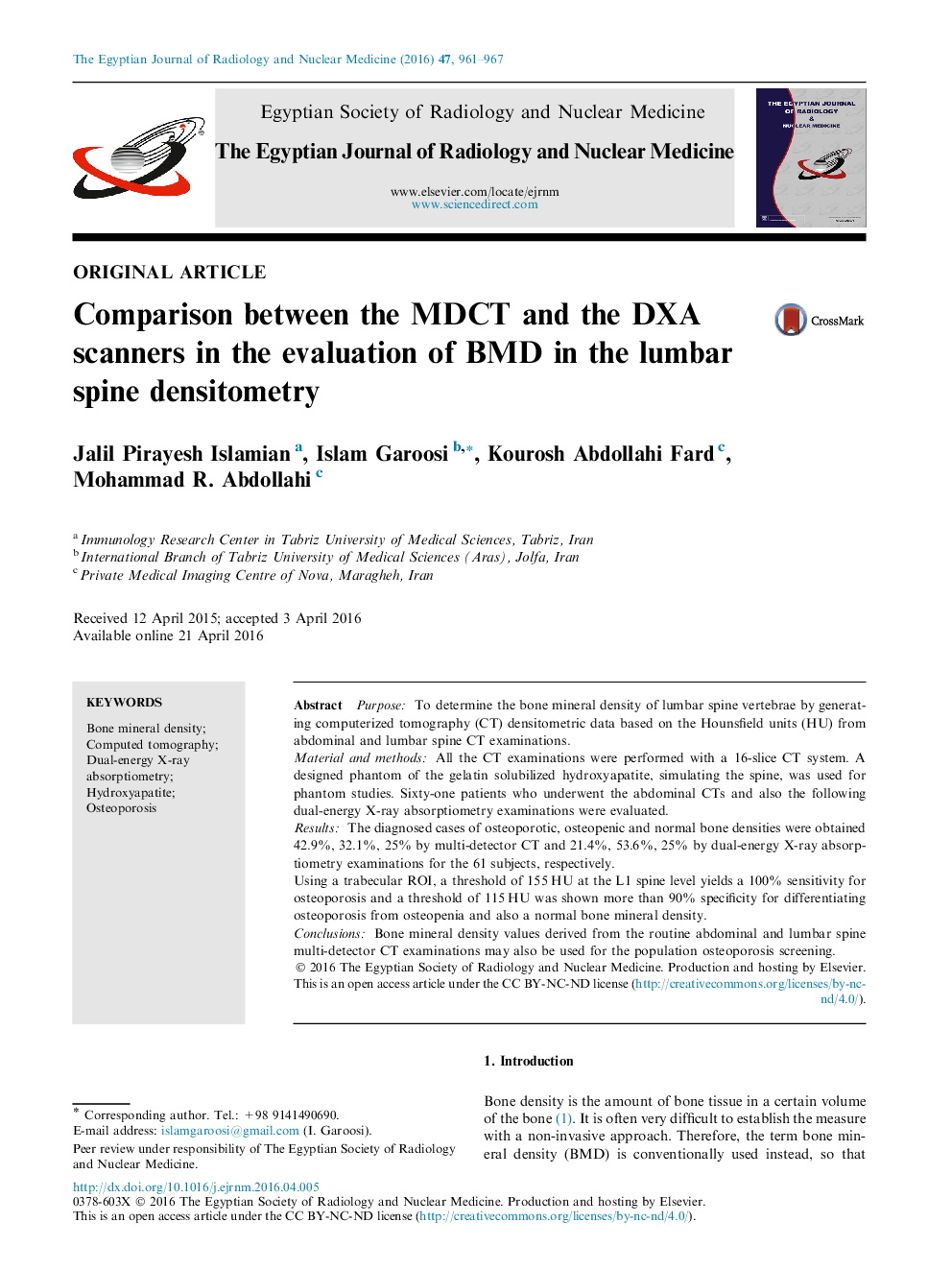| Article ID | Journal | Published Year | Pages | File Type |
|---|---|---|---|---|
| 4224014 | The Egyptian Journal of Radiology and Nuclear Medicine | 2016 | 7 Pages |
PurposeTo determine the bone mineral density of lumbar spine vertebrae by generating computerized tomography (CT) densitometric data based on the Hounsfield units (HU) from abdominal and lumbar spine CT examinations.Material and methodsAll the CT examinations were performed with a 16-slice CT system. A designed phantom of the gelatin solubilized hydroxyapatite, simulating the spine, was used for phantom studies. Sixty-one patients who underwent the abdominal CTs and also the following dual-energy X-ray absorptiometry examinations were evaluated.ResultsThe diagnosed cases of osteoporotic, osteopenic and normal bone densities were obtained 42.9%, 32.1%, 25% by multi-detector CT and 21.4%, 53.6%, 25% by dual-energy X-ray absorptiometry examinations for the 61 subjects, respectively.Using a trabecular ROI, a threshold of 155 HU at the L1 spine level yields a 100% sensitivity for osteoporosis and a threshold of 115 HU was shown more than 90% specificity for differentiating osteoporosis from osteopenia and also a normal bone mineral density.ConclusionsBone mineral density values derived from the routine abdominal and lumbar spine multi-detector CT examinations may also be used for the population osteoporosis screening.
